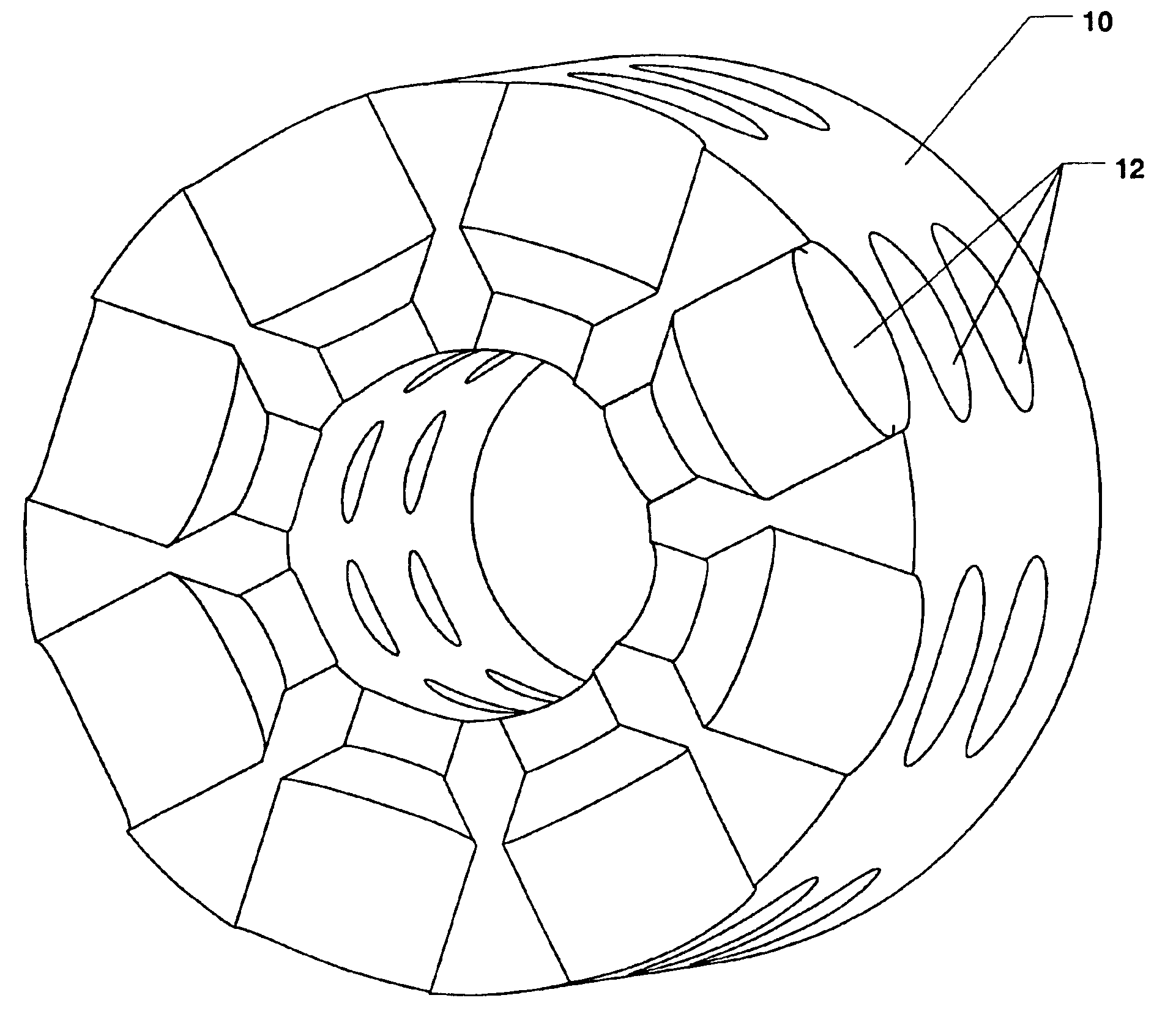Projectile diverter
a technology of projectiles and diverters, which is applied in direction controllers, instruments, weapons, etc., can solve the problems of ineffective force over a long time period, difficult for a rocket motor with loose loaded propellant to burn all of its propellant, and ineffective when a relatively high impulse, etc., to achieve fast functioning diverter results, low cost, and compact high impulse
- Summary
- Abstract
- Description
- Claims
- Application Information
AI Technical Summary
Benefits of technology
Problems solved by technology
Method used
Image
Examples
Embodiment Construction
[0020]FIG. 1 shows a cross-sectional view of a rocket 10 with a single diverter 12 on the right side. In this embodiment, the rocket 10 is a 2.75-inch diameter rocket. It should be apparent from the specification, however, that the diverter would be useful on many types of projectiles. As shown in FIG. 1, the core of rocket 10 has eight barrels 1, 2, 3, 4, 5, 6, 7, and 8 for installing eight diverters, just like diverter 12, in a band about the rocket 10. The rocket 10 includes a free passage 9 to allow connection of each of the diverters 12 to the fireset (not shown).
[0021]The diverters can be arranged in several bands about the rocket 10 as shown in FIG. 2. FIG. 2 illustrates a perspective view of the rocket 10 with three bands of diverters 12. Each band includes eight diverters, but other amounts are possible besides those shown in FIGS. 1-2. FIG. 2 shows a partial cross-section through the first of three bands of diverters.
[0022]As shown in FIGS. 1-2, the diverters have axes per...
PUM
 Login to View More
Login to View More Abstract
Description
Claims
Application Information
 Login to View More
Login to View More - R&D
- Intellectual Property
- Life Sciences
- Materials
- Tech Scout
- Unparalleled Data Quality
- Higher Quality Content
- 60% Fewer Hallucinations
Browse by: Latest US Patents, China's latest patents, Technical Efficacy Thesaurus, Application Domain, Technology Topic, Popular Technical Reports.
© 2025 PatSnap. All rights reserved.Legal|Privacy policy|Modern Slavery Act Transparency Statement|Sitemap|About US| Contact US: help@patsnap.com



